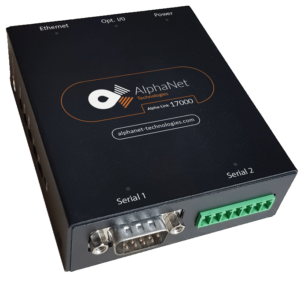In the ever-evolving landscape of industrial automation and control, seamless communication is the linchpin that drives efficiency, productivity, and competitiveness. Industrial networks must connect diverse devices and systems, facilitating data exchange and control. In this article, we’ll delve into the importance of seamless communication in industrial networks, the challenges it presents, and the strategies and technologies that enable it.
H2: The Importance of Seamless Communication
H3: The Backbone of Industrial Operations
Seamless communication is the backbone of industrial operations, influencing the following critical aspects:
- Efficiency: Streamlined communication ensures that data flows effortlessly between devices and systems, reducing bottlenecks and delays in decision-making.
- Productivity: A well-communicating network enables devices and machinery to work in harmony, optimizing production processes and reducing downtime.
- Cost Reduction: Efficient communication minimizes manual interventions, leading to cost savings in terms of labor and operational expenses.
- Scalability: As businesses grow, seamless communication allows for the easy addition of new devices and technologies to the network, ensuring scalability.
H2: The Challenges of Seamless Communication
H3: Navigating Complexities
While the benefits of seamless communication are clear, achieving it in industrial networks can be challenging due to various complexities:
- Diverse Protocols: Industrial devices often communicate using different communication protocols, creating a need for protocol translation and compatibility.
- Legacy Systems: Many industries still rely on legacy systems that may use outdated communication methods, complicating integration with modern networks.
- Real-Time Demands: Industries require real-time data for monitoring and control, placing a premium on networks that can deliver timely information.
- Security: Industrial networks must prioritize data security to protect sensitive information and systems from cyber threats.
H2: Strategies for Achieving Seamless Communication
H3: A Roadmap to Success
Several strategies and technologies can help industrial networks achieve seamless communication:
1. Protocol Translation Gateways
Protocol translation gateways, such as the AlphaNet AT17000-MMt Gateway Converter Series, play a pivotal role in seamless communication. These devices bridge the gap between different communication protocols, allowing devices with diverse languages to understand and communicate with each other. Whether it’s translating Modbus RTU to Modbus TCP or other protocols, these gateways ensure compatibility and smooth data exchange.
2. Edge Computing
Edge computing brings data processing closer to the source, reducing latency and enabling real-time analysis and decision-making. Edge devices, equipped with computing power and communication capabilities, facilitate local data processing and can operate autonomously, even in the absence of a centralized network.
3. Industrial IoT (IIoT)
The Industrial Internet of Things (IIoT) connects industrial devices and systems to the internet, enabling remote monitoring, data analysis, and control. IIoT devices, sensors, and platforms collect and transmit data, providing valuable insights for optimizing industrial processes.
4. Secure Communication Protocols
Implementing secure communication protocols, such as VPNs (Virtual Private Networks) and encrypted connections, ensures the confidentiality and integrity of data transmitted over industrial networks. Robust security measures are crucial for protecting sensitive industrial data from cyber threats.
5. Redundancy and Reliability
Building redundancy into the network infrastructure enhances reliability and fault tolerance. Redundant communication paths and failover mechanisms ensure that communication remains uninterrupted, even in the event of network failures.
H2: The Role of AlphaNet AT17000-MMt Gateway Converter Series
H3: Bridging the Protocol Divide
The AlphaNet AT17000-MMt Gateway Converter Series is a prime example of a technology that empowers seamless communication in industrial networks. It serves as a bridge between Modbus RTU/ASCII devices and Modbus TCP networks, enabling devices with different protocols to communicate harmoniously. Here’s how the AT17000-MMt Gateway Converter Series achieves this:
1. Protocol Translation
The AT17000-MMt Gateway Converter Series excels in protocol translation. It translates Modbus RTU/ASCII commands and data into the Modbus TCP format and vice versa. This ensures that Modbus RTU/ASCII devices can communicate effectively with Modbus TCP devices on the same network.
2. Real-Time Data Exchange
Industrial processes demand real-time data exchange. The AT17000-MMt Gateway Converter Series ensures that data flows in real time, providing timely insights for decision-making and control. This real-time capability is crucial for maintaining the efficiency and responsiveness of industrial operations.
3. Device Integration
Whether you have legacy Modbus RTU/ASCII devices or modern Modbus TCP devices, the AT17000-MMt Gateway Converter Series seamlessly integrates them into your industrial network. This flexibility is invaluable for maintaining and upgrading your network infrastructure as needed.
4. Remote Monitoring and Control
The AT17000-MMt Gateway Converter Series empowers remote monitoring and control of Modbus RTU/ASCII devices. This capability allows operators to troubleshoot, adjust, and optimize processes without being physically present at the device location, reducing downtime and operational costs.
H2: Conclusion: The Future of Seamless Communication
H3: Enabling Efficiency and Competitiveness
Seamless communication is not just a goal; it’s the driving force behind efficient and competitive industrial operations. By employing the right strategies and technologies, such as protocol translation gateways like the AlphaNet AT17000-MMt Gateway Converter Series, industrial networks can navigate the complexities, achieve real-time communication, and harness the power of the Industrial Internet of Things (IIoT) for data-driven decision-making.


